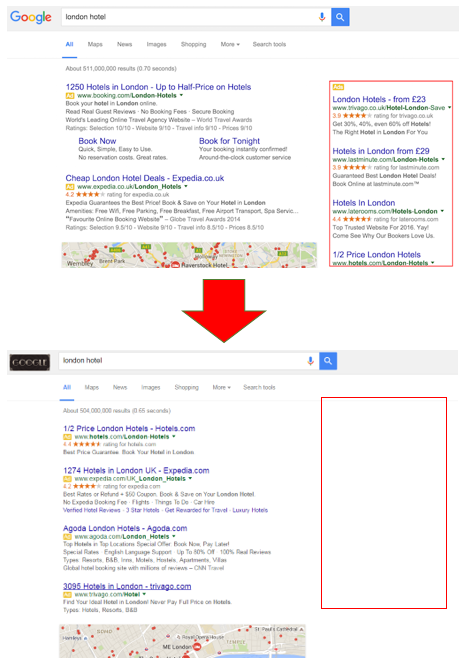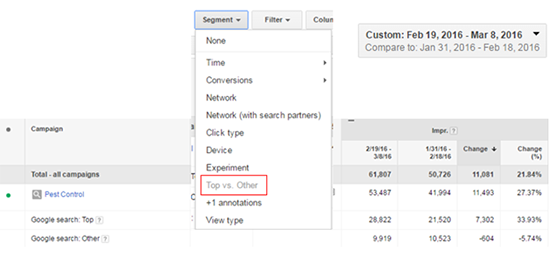March 30, 2016
| Article | Search Engine Optimization
Living in a Post-Right-Rail World
What to do as an advertiser during the latest search apocalypse?
Remember this date: February 17th, 2016; or the day Google no longer served ads on the right-hand side (also known as right rail) of the search engine results page (SERP). If you are an avid on-the-go/mobile searcher, you won’t notice this news as the change only affects desktop searches.
Before this decision, you would see as many as 11 ads on the first page of a desktop results page. Today, you will see a maximum of 7 ads for high-volume, commercial search terms like “used cars,” “NCAA tournament tickets,” or “PPC agency.” Comparatively, searching for long-tail and niche phrases, such as “ice cream sandwich delivery,” should produce minimal search results.

What will Google do with this new space?
With no ads on the right-hand side, the desktop search results page will have more room for Product Listing Ads, Knowledge Panels, Google Business profiles, Google Maps, and newly announced Google “posts.” My conspiracy theory is that Google’s employees are staying up for countless hours every night to come up with game-changing features to fill this real estate. The simpler/more boring answer to this is Google wants to make the user experience similar across all devices as mobile activity continues to surpass desktop activity.
How will this affect my account’s performance?
It’s going to be important to review your account’s performance after this news. The easiest way to do this is to segment your data by Top vs. Other in AdWords and compare data before and after the change:
- If costs are going up, this means ads are showing in a more prominent position. Side ads always had very low interaction and mostly drove impressions. In fact, bottom ads have always had a higher click-through rate than side ads.
- If you’re seeing incremental clicks and conversions, then this is an opportunity to increase budget to take advantage and cash in more leads.
- If you’re not seeing any improvement, manage/adjust bids and/or budgets to compensate. Consider increasing your bids if you typically show between positions 5 and 11.

Most importantly, check your Quality Scores and make sure they are fully optimized. The top 4 spots will become even more sought after since organic search results will be pushed down (almost below-the-fold) and there will be less ad positions above-the-fold.
At this point, it’s too early to tell what this will mean for your costs. Some believe that less ads on the first results page will drive up costs (supply/demand). Others believe that advertisers won’t be as willing to target their bidding as high for bottom ads as they were for ads on the side, driving overall cost-per-clicks down.
My prediction? At least for the short-term, we will see inflated CPCs due to advertisers overreacting to this news and the lower clickthrough-rates in the top positions. My gut tells me this change will have a more lasting effect on organic search and whatever Google has planned for the right side of the SERP.
To-Do list:
- Monitor performance by using Top vs. Other segmentation and comparing date ranges before and after the change
- Make note of bids and positioning as we move further from the change
- Enable as many extensions as possible to take up more real estate
- Write ads that stand out from the top 4 and tailor them to customers already in your funnel (Remarketing Lists for Search Ads and Customer Match)
- Manage ROI, not CPCs